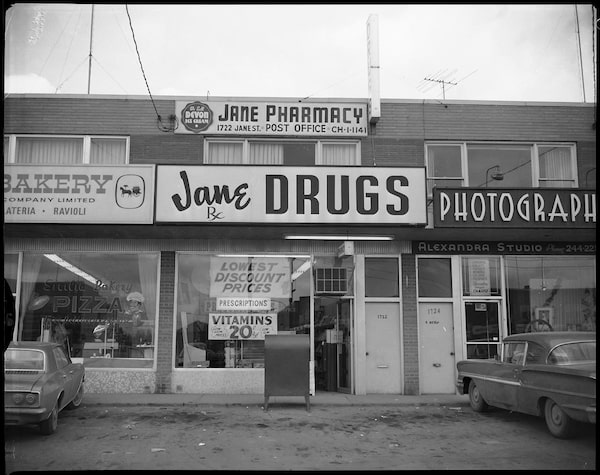
By 1961, most of 1692 – 1732 Jane St. in Toronto's Weston neighbourhood had been built, with businesses including a dry cleaner, drug store, and Alexandra [photography] Studio.Alexandra Studio/Handout
While I am lucky enough to have never experienced writer’s block, I am now convinced, after touring the new exhibit at the City of Toronto Archives (255 Spadina Rd.) that I need not fear should it rear its ugly head.
On display until August, 2024, If These Walls Could Talk – Researching the History of Where You Live, proves that a deep dive into any property – from a humble, clapboard cottage in North York to a Gothic mansion downtown or even a strip mall in the (former) town of Weston – will reveal a cast of characters that can compete with the protagonists and villains found at the local bookstore. And oh, the research rabbit holes that open! There are topics as far-ranging as aviation, strong independent women, British Home Children, a princess and even a Hollywood celebrity.
“So the Women’s Council have leased these 24 apartments, all on the south side, and the secretary, her name is Minnie Irvine … decides she’s going to take a three-bedroom unit and she’s going to run all of the affairs of the [Women’s Council] from Bain,” says Toronto Archives researcher Jessica Algie of the Bain Apartments Co-operative in Riverdale. “So they invite Lord and Lady Aberdeen to come to tea right when the Bain opens [in 1915].”
Ms. Algie then skips to the 1970s to talk about when the 260 “cottage flats” (as designed by prominent arts and crafts architect Eden Smith) were known as the “Red Bain” due to links to prominent left-wing politicians such as John Sewell and Peter Tabuns, and then, a bit later, when the complex, which has always housed creative types, had its own private television station. “It’s stranger than fiction,” she laughs.
Similarly, when co-curator Neil Brochu was unpacking the long life of 295 George St. – a tall, semi-detached, 1856 house just a stone’s throw from the infamous Fillmores Hotel strip club – and its half-century as home to the Fegan Boys Home from 1886 to 1937 (a network of residences for impoverished or orphaned British children), that he was able to add more layers to the story: “the city operated a boy’s home up the street – we now have Seaton House that’s there. There was a YMCA on Pembroke [Street]/ … Starting in the late 19th century there was a real concentration of social services, particularly catering to children.”
“It was designed as an upper middle-class area, so it’s when Rosedale and Forest Hill were built that these neighbourhoods off Jarvis [Street] and Sherbourne [Street] started to depopulate.”
From the (former) mansions of Jarvis and Sherbourne Streets the exhibit takes us to 12 Alexis Blvd. in North York. There, between sturdy postwar bungalows, sits an “odd-looking little structure that is remarkably old,” says co-curator Sarah Carson.
With an off-centre front door, a pair of lonely double-hung windows and a repair done in bare plywood (it was hit by a car), it’s not the sort of dwelling that would ever grace the cover of a magazine, yet, says Ms. Carson, this turn-of-the-20th-century house and the neighbouring property were owned by the Neal family from 1915 until 2016 – a family that has a strong connection to aviation history. John Neal’s son, George, found employment at the brand new De Havilland plant in 1937; in 1941 he enlisted in the Royal Canadian Airforce, but rejoined De Havilland in 1946. Two years later, he became chief test pilot. In 1995, Neal was inducted into the Canadian Aviation Hall of Fame.
Even postwar strip malls have rich histories. By 1961, most of 1692-1732 Jane St. had been built, and signs had been put up to find commercial and residential tenants. By 1963 there was Vella Supermarket and Vella Shoes (run by Grazio and Carmella Vella who live on St. Clair Avenue West), a “travel agency and European gift centre,” a dry cleaner, drug store and Alexandra [photography] Studio. Interestingly, the Toronto Archives holds 10,000 negatives from this studio, since it dates back to 1874. Residential tenants range from sales clerks and housewives to a “serviceman with Pepsi-Cola” and a pair of design engineers with De Havilland.
“It made ownership more accessible because they are small units, you’re not buying the entire strip mall,” says Ms. Carson. “And it was also an affordable type of rental [housing] as well, but also quite accessible; it’s on main transit routes, it’s at Jane and Lawrence, there’re businesses right beneath you.”
And speaking of the postwar period, the 1959-1961 subdivision of Midland Park, where your humble Architourist lived from 2005 to 2010, is featured also. While some of my research into the 750-home enclave was used (the builder, Curran Hall Ltd., was owned by politician Paul Hellyer and the house models were designed by architect Edward Ross), it is the continued good work of my former neighbour, Lisa Duperreault, and her formation of the Midland Park Modernism Alliance, that has kept this special place in the spotlight.
As for the princess and the Hollywood celebrity, the exhibit finds Princess Margaret (and Lord Snowdon) singing show tunes at the “11th-floor home of Mrs. Edmont Frankel” at 330 Spadina Rd. (Tower Hill Apartments by WZMH, 1965), and Mary Pickford autographing the front door of 90 Glenwood Cres. in East York. The 1942 bungalow (still there today) was raffled off to 48-year-old George Ellis, a boiler room worker with Consumers Gas. “When informed of his win,” the exhibit’s text tells us, “Ellis says, ‘I’ll tell you this … it’s too good for me. I’ll sell it alright.’”
Although there are just 11 properties featured, If These Walls Could Talk tells hundreds of stories that will keep gallerygoers enthralled for weeks after viewing.
“It’s a bit like genealogy,” Mr. Brochu says. “You go from a very ego-drive space – I want to know something about me and this place and how I fit in – and then as you do that research you find out all sorts of other things … that intersect with that story.”
If These Walls Could Talk – Researching the History of Where You Live runs until August, 2024. Monday to Friday between 9 a.m. and 4 p.m. City of Toronto Archives, 255 Spadina Rd., free admission.
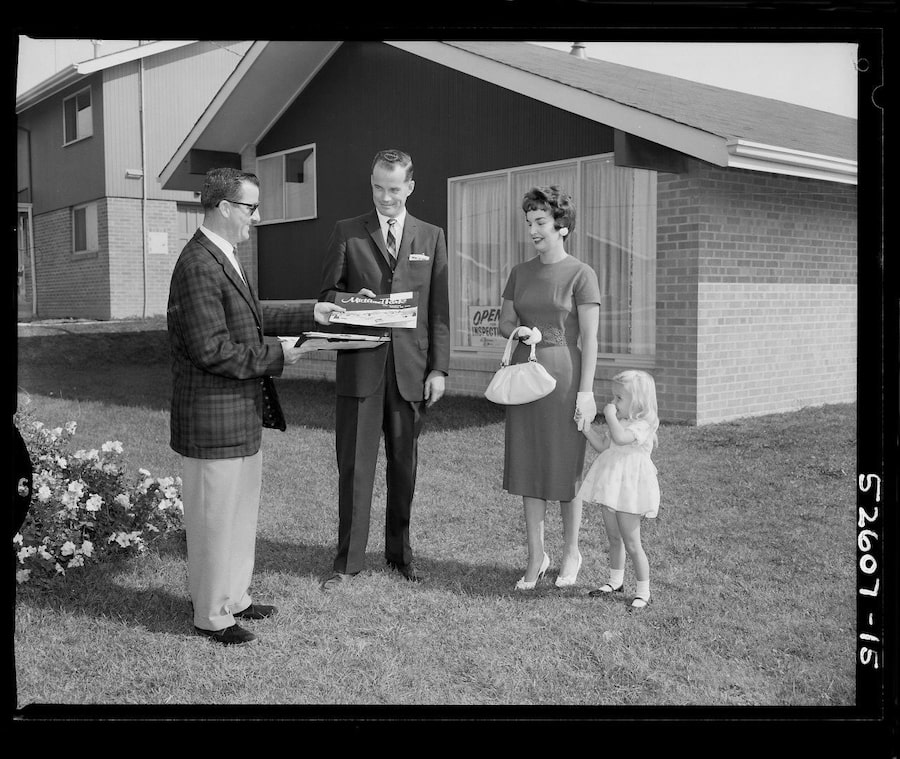
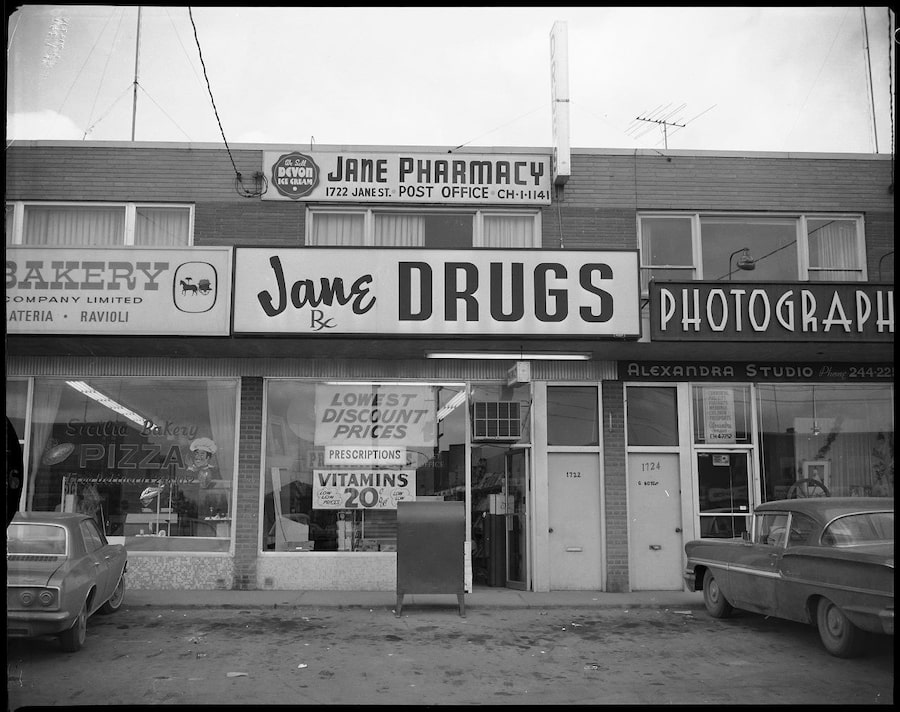
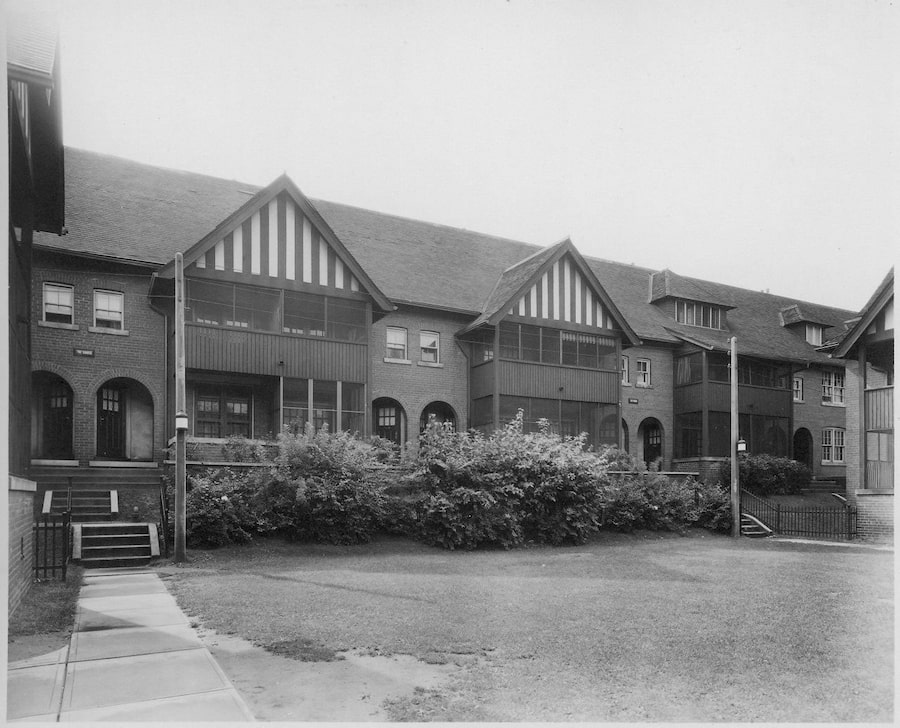
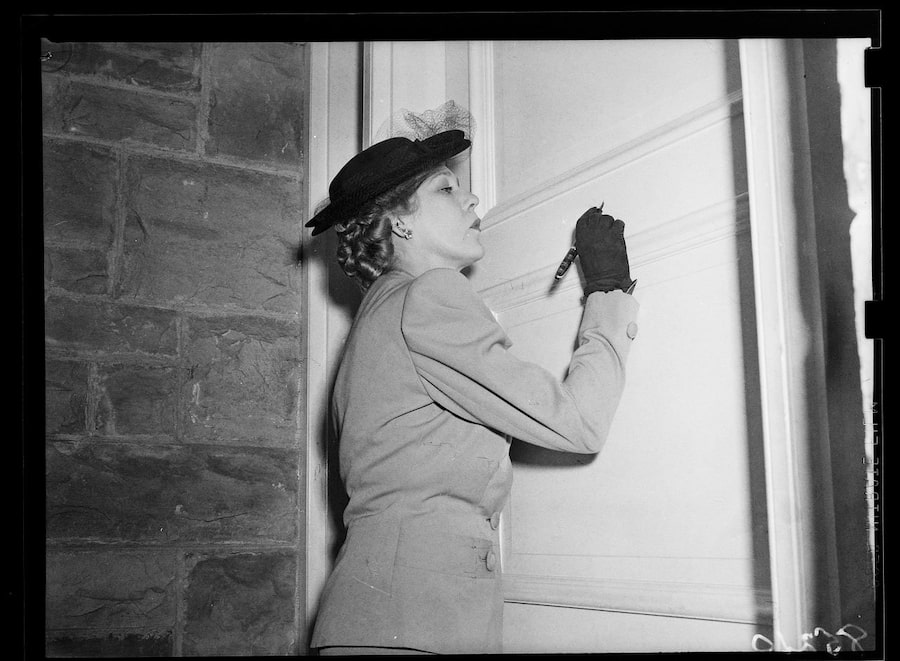
 Dave LeBlanc
Dave LeBlanc